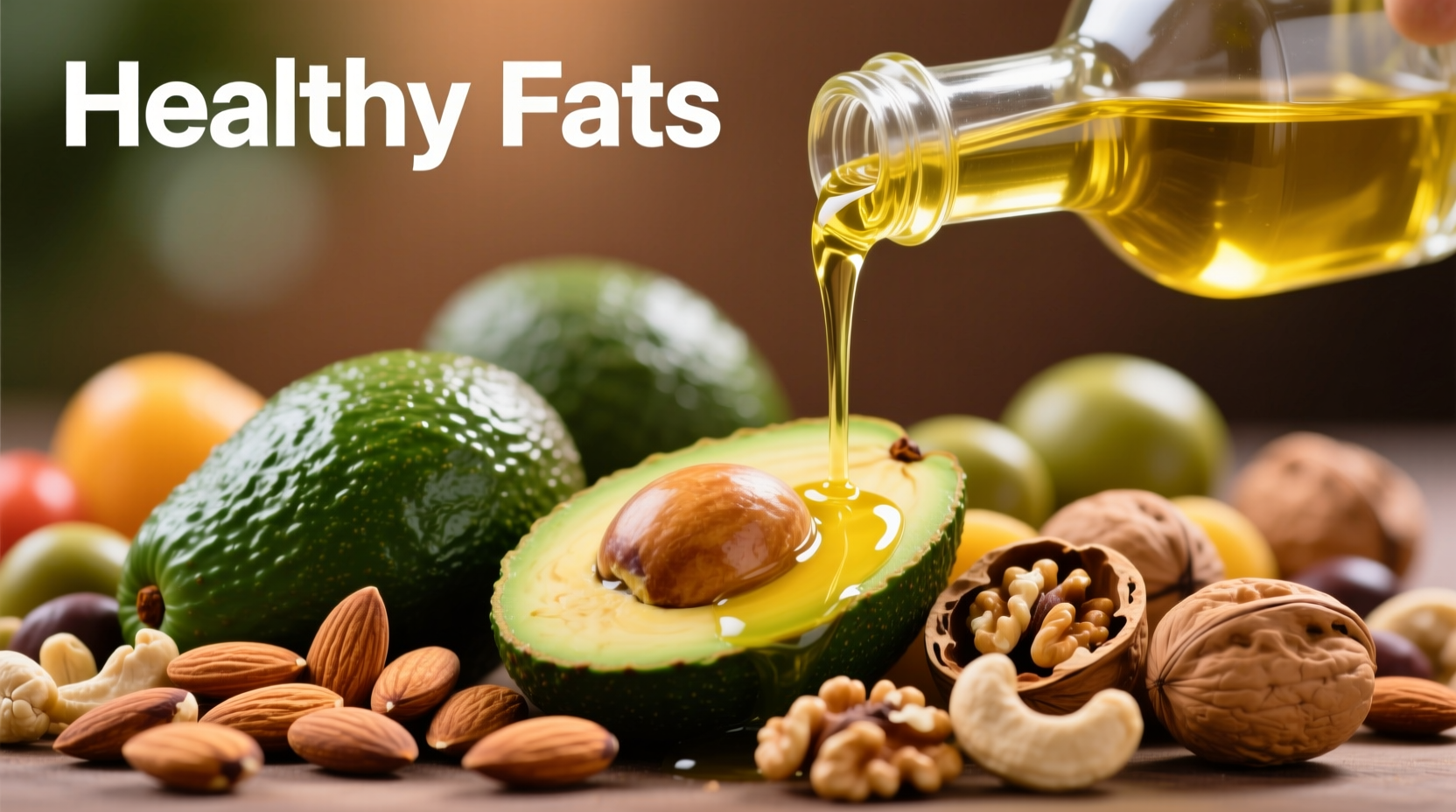Understanding Dietary Fats: Beyond the Basics
Not all fats are created equal. While dietary fat has faced decades of misinformation, modern nutrition science reveals its critical role in hormone production, vitamin absorption, and brain health. The key distinction lies in fat types:
| Fat Type | Primary Sources | Health Impact | Recommended Intake |
|---|---|---|---|
| Monounsaturated | Olive oil, avocados, almonds | Lowers bad cholesterol | 15-20% of daily calories |
| Polyunsaturated (Omega-3) | Fatty fish, walnuts, flaxseeds | Reduces inflammation | 5-10% of daily calories |
| Saturated | Butter, coconut oil, red meat | Neutral in moderation | <10% of daily calories |
| Trans Fats | Processed snacks, fried foods | Increases heart disease risk | Avoid completely |
This nutritional comparison aligns with Dietary Guidelines for Americans 2020-2025, which emphasize replacing saturated fats with unsaturated alternatives while maintaining appropriate calorie balance.
Top High-Fat Foods Worth Knowing
When evaluating what are the high fat foods that deserve a place in your pantry, consider these nutrient-dense options organized by category:
Fats and Oils: The Pure Fat Category
- Olive oil (100g fat per 100ml) - Rich in monounsaturated fats, ideal for dressings and low-heat cooking
- Avocado oil (100g fat) - Higher smoke point than olive oil, excellent for searing
- Coconut oil (99g fat) - Contains medium-chain triglycerides (MCTs) that provide quick energy
Nuts and Seeds: Portable Powerhouses
- Almonds (49g fat per 100g) - High in vitamin E and magnesium
- Chia seeds (31g fat) - Exceptional omega-3 content and fiber
- Pumpkin seeds (49g fat) - Rich in zinc and iron, supporting immune function
Animal-Based High Fat Foods
- Salmon (13g fat per 100g) - Contains 2,260mg omega-3 per 3oz serving according to USDA FoodData Central
- Egg yolks (26g fat per 100g) - Packed with choline for brain health
- Grass-fed butter (81g fat) - Contains conjugated linoleic acid (CLA) with potential metabolic benefits

Context Matters: When High-Fat Foods Shine (and When They Don't)
Understanding the context boundaries for high fat foods consumption separates effective nutrition guidance from oversimplified advice. Consider these evidence-based scenarios:
- Ketogenic diets: High-fat foods become essential (70-80% of calories) for maintaining ketosis, particularly avocados, MCT oil, and fatty fish
- Active individuals: Endurance athletes benefit from increased fat intake (30-35% of calories) for sustained energy during long training sessions
- Weight management: High-fat foods increase satiety but require portion control - a handful of nuts (1 oz) provides about 160-200 calories
- Cardiovascular concerns: Those with heart conditions should prioritize unsaturated fats while limiting saturated fats to under 6% of daily calories as recommended by the American Heart Association
Practical Integration: Making High-Fat Foods Work for You
Instead of asking what are the high fat foods to avoid, focus on strategic incorporation:
Smart Swaps for Better Fat Quality
- Replace butter with avocado in baking for moisture without saturated fat
- Use olive oil instead of vegetable oil in dressings for higher monounsaturated content
- Choose full-fat Greek yogurt over low-fat versions with added sugars
Portion Guidance for Common High-Fat Foods
- Nuts and seeds: 1/4 cup (small handful)
- Olive oil: 1 tablespoon for cooking, 2 tablespoons for dressings
- Avocado: 1/2 medium fruit per serving
- Fatty fish: 3-4 ounce portion, 2-3 times weekly
Navigating Misinformation: Evidence-Based Fat Guidance
The evolution of dietary fat recommendations reveals why current high fat foods nutrition facts matter more than outdated fear-based approaches. In the 1980s, low-fat diets dominated nutrition advice, leading to increased sugar consumption and processed food reliance. Modern research, including the landmark PREDIMED study, demonstrates that Mediterranean diets rich in healthy fats reduce cardiovascular events by 30% compared to low-fat approaches.
When evaluating healthy high fat foods for weight loss, remember that fat provides 9 calories per gram (more than double carbohydrates and protein), making portion control essential. However, the satiety provided by quality fats often leads to reduced overall calorie consumption compared to low-fat, high-sugar alternatives.
Your High-Fat Food Questions Answered
Which high-fat foods should I eat daily for optimal health?
Include one serving of fatty fish (3-4oz salmon), a small handful of nuts (1/4 cup almonds), and half an avocado daily. These provide essential omega-3s, monounsaturated fats, and fiber while staying within recommended fat intake levels of 20-35% of total daily calories.
Are high-fat foods bad for cholesterol?
Not all high-fat foods affect cholesterol negatively. Unsaturated fats from avocados, olive oil, and nuts typically improve cholesterol profiles by raising HDL (good cholesterol) and lowering LDL (bad cholesterol). Saturated fats from processed meats and baked goods can raise LDL, while trans fats significantly increase heart disease risk and should be avoided completely.
How can I include high-fat foods in a weight loss plan?
Focus on nutrient-dense high-fat foods in controlled portions: add 1/4 avocado to salads, use 1 tbsp olive oil for cooking, and snack on 12 almonds. These foods increase satiety, reducing overall calorie intake. Research shows diets containing 30-35% fat from quality sources often yield better weight loss results than very low-fat diets due to improved adherence and metabolic benefits.
What's the difference between healthy and unhealthy high-fat foods?
Healthy high-fat foods (avocados, nuts, olive oil, fatty fish) contain primarily unsaturated fats with additional nutrients like fiber, vitamins, and antioxidants. Unhealthy options (fried foods, processed snacks, fatty cuts of red meat) typically contain high levels of saturated fats and trans fats with minimal nutritional value. The healthiest choices provide fat along with other beneficial compounds rather than being pure fat sources with added sugars or sodium.











 浙公网安备
33010002000092号
浙公网安备
33010002000092号 浙B2-20120091-4
浙B2-20120091-4